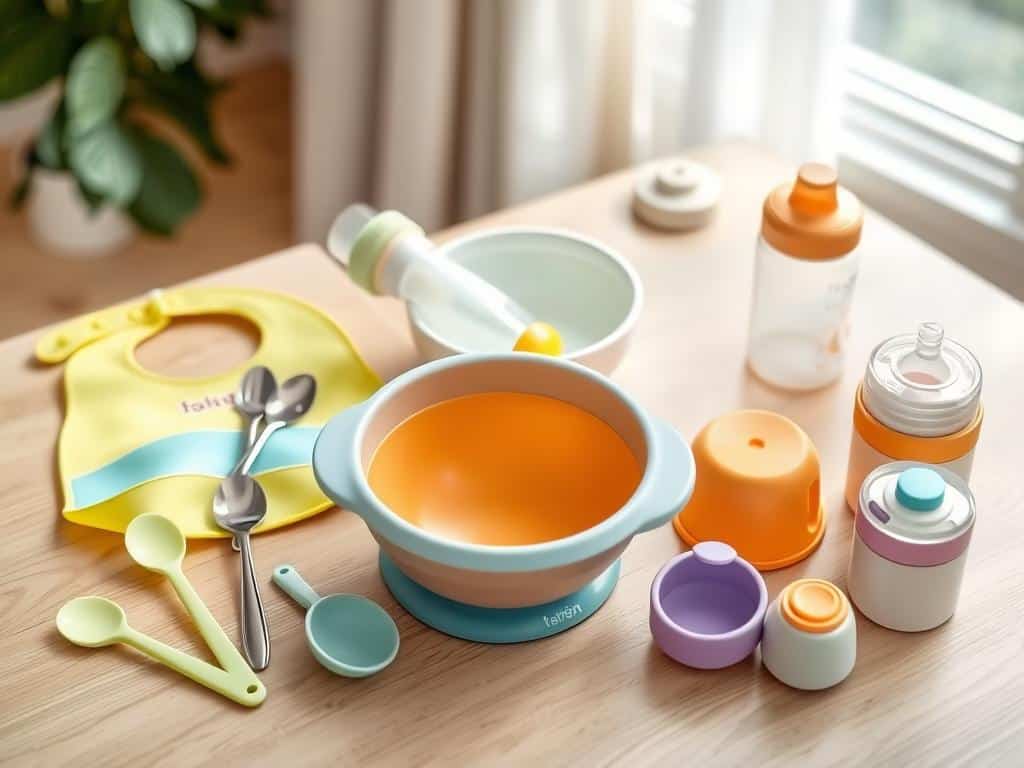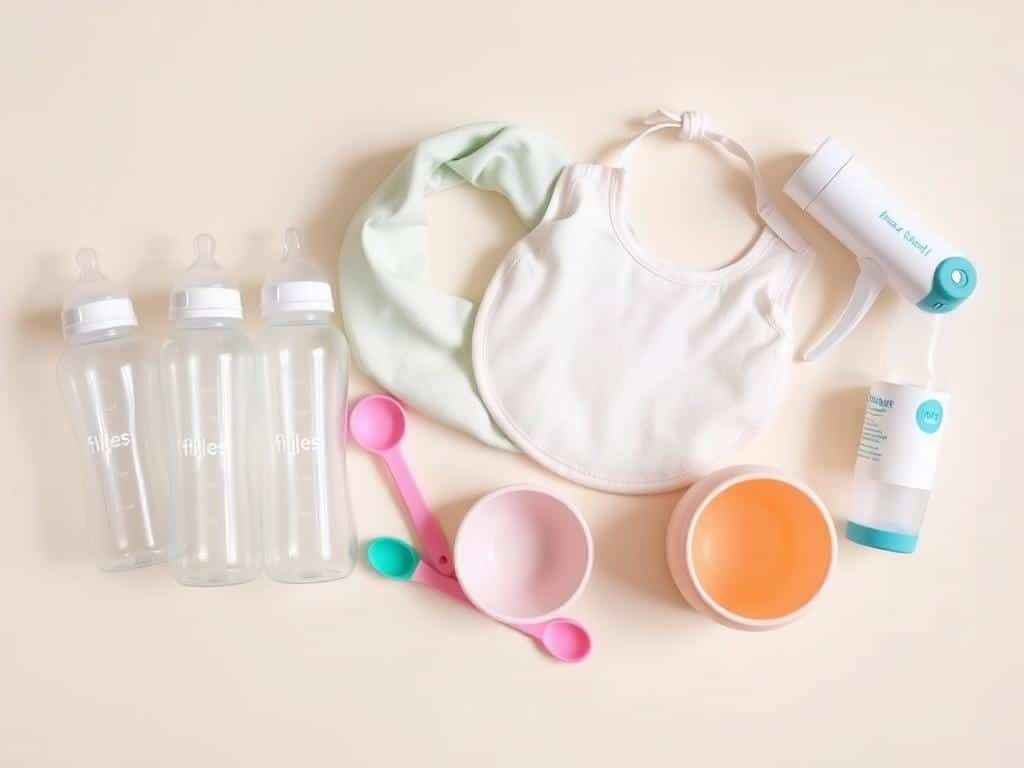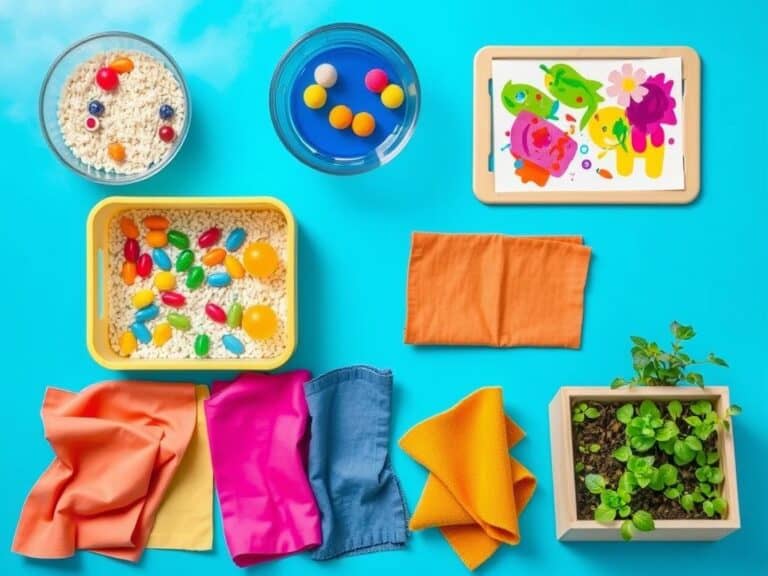Best Baby Feeding Essentials Every New Parent Needs
Schylling NeeDoh Nice Cube -Sensory Squeeze Toy with Super Solid Squish - 2.25" Cube
$8.99 (as of May 2, 2025 06:36 GMT +00:00 - More infoProduct prices and availability are accurate as of the date/time indicated and are subject to change. Any price and availability information displayed on [relevant Amazon Site(s), as applicable] at the time of purchase will apply to the purchase of this product.)40 Inch Beige Number 1 Balloon for 1st Birthday Decoration, Large Self Inflating Cream Foil Number Balloons 0-9 for Boys Girls, White Sand 1 Helium Balloons for Women Men Party Anniversary Supplies
$5.99 (as of May 2, 2025 06:36 GMT +00:00 - More infoProduct prices and availability are accurate as of the date/time indicated and are subject to change. Any price and availability information displayed on [relevant Amazon Site(s), as applicable] at the time of purchase will apply to the purchase of this product.)LeapFrog Learning Friends 100 Words Book, Green
$18.00 (as of May 2, 2025 06:36 GMT +00:00 - More infoProduct prices and availability are accurate as of the date/time indicated and are subject to change. Any price and availability information displayed on [relevant Amazon Site(s), as applicable] at the time of purchase will apply to the purchase of this product.)This post may contain affiliate links which means I may receive a commission for purchases made through links at no extra cost to you. I only recommend products I truly believe in. Thank you for your support!
Being a new parent can feel really tough. There are so many things you need for your baby’s first months. But, with some help, you can get everything your baby needs to grow well.
Bottles are a key item for feeding your baby. You should have about 8 bottles with small nipples. Also, get bottle brushes or dishwasher baskets to keep things clean.
If you use formula, you’ll need a lot for a few weeks. Look into different types to find the best one for your baby. Nursing moms need pillows, bras, pads, and bags for milk storage.
A good breast pump is a must for nursing moms. It lets you save milk for when you can’t be there to feed your baby.
Key Takeaways
- Invest in a set of 8 bottles with newborn-sized nipples
- Stock up on several weeks’ worth of formula or breastfeeding supplies
- Consider a high-quality breast pump to express and store milk
- Ensure you have the necessary cleaning accessories for bottles and feeding gear
- Prioritize infant safety and hygiene when selecting feeding essentials
Understanding the Importance of Baby Feeding Essentials

As a new parent, getting the right baby feeding essentials is key. It ensures your baby gets the nutrients they need for growth. These items help keep things clean and make feeding time fun for both you and your baby.
Why Feeding Essentials Are Crucial
Quality bottles, nipples, and formula are vital for your newborn’s nutrition. They help prevent issues like colic and spit-up. Also, using bottle brushes and cleaners keeps germs away and keeps your baby healthy.
How They Benefit You and Your Baby
Choosing the right feeding essentials saves time and reduces stress. For example, a formula mixing pitcher makes preparing meals easier. Comfortable nursing pillows, like the My Brest Friend or Boppy Pillow, support you and your baby during feeding.
Using items like burp cloths and bibs keeps clothes clean during meals. This makes feeding time better for everyone. By picking baby-friendly products, you create a safe space for your baby’s meals. This helps your baby’s health and makes you feel more at ease.
“The right feeding essentials not only support your baby’s nutrition but also make the feeding experience more comfortable and enjoyable for both you and your little one.”
Must-Have Bottles for Every Newborn

Finding the right baby bottles can seem hard. But, it’s key for your newborn’s feeding needs. There are many shapes, like standard, wide-neck, and anti-colic, for every baby.
Choosing the Right Bottle Shape
Standard bottles are a timeless pick. They have a simple shape that babies find easy to latch onto. Wide-neck bottles have a bigger opening, making it easier for babies to hold.
Anti-colic bottles have vents or tubes. They help reduce gas and make feedings more comfortable.
BPA-Free vs. Glass Bottles
You can choose between BPA-free plastic or glass bottles. BPA-free plastic bottles are light, durable, and affordable. Glass bottles are eco-friendly and easy to clean.
Nipple Varieties and Flow Rates
Bottle nipples come in different shapes, like standard and orthodontic. The flow rate is also key. Newborns need slow flow, while older babies prefer faster.
Start with 8 bottles and newborn-sized nipples. Try different brands to see what works best for your baby.
| Bottle Brand | Bottle Set | Price |
|---|---|---|
| Born Free | Born Free Gift Set | $23 |
| Philips AVENT | Philips AVENT BPA Free Classic Infant Starter Gift Set | $49 |
| Dr. Brown’s | Dr. Brown’s BPA Free Polypropylene Natural Flow Bottle Newborn Feeding Set | $23 |
| Playtex | Playtex Drop-Ins Original BPA Free Nurser Newborn Starter Set | $25 |
“Having the right bottles on hand can make all the difference in those early weeks and months of feeding your newborn.”
The Best Formula Options for New Parents

Choosing a baby formula can feel like a big task for new parents. There are many types like powdered, liquid, and ready-to-use. You also have to decide if you want organic or non-organic. Let’s look at the best options to help your baby get the nutrients they need.
Comparing Powdered, Liquid, and Ready-to-Use Formulas
Powdered formula is the cheapest, costing about $0.64 per ounce for Kirkland Signature ProCare Non-GMO Infant Formula. It needs to be mixed with water, which takes more time. Liquid concentrate formulas, like Enfamil Enspire at $2.29 per ounce, are easier but pricier. Ready-to-use formulas, like Similac Alimentum at $2.49 per ounce, are the most convenient but also the most expensive.
Organic vs. Non-Organic Formulas
Organic baby formulas, like Earth’s Best Organic Infant Formula at $1.56 per ounce, use organic ingredients. They are seen as healthier but cost more. Non-organic formulas, like Enfamil and Gerber Good Start, are cheaper but still provide the needed nutrients.
Think about your baby’s needs, your budget, and your lifestyle when choosing a formula. Start with a small amount and talk to your pediatrician for advice. The right formula helps your baby grow strong and healthy.
“Enfamil is rated as the best baby formula option by experts and parents from the What to Expect community, considering factors such as price, availability, and ingredients.”
Essential Feeding Accessories

Being a new parent can be tough. But, the right accessories make feeding your baby easier. Here are some must-haves for every parent.
Bottle Brushes and Cleaners
It’s key to keep your baby’s bottles clean. Get a good bottle brush to clean every part of the bottle. Use a bottle sterilizer or drying rack to make cleaning easier.
Bibs and Smocks to Keep Things Clean
Mealtimes can get messy. But, the right bibs and smocks can save your baby’s clothes. Choose ones that are easy to clean and come in fun designs. Have lots of bibs and burp cloths ready.
Bottle Warmers for On-the-Go Convenience
A bottle warmer is a must when you’re out with your baby. It heats up formula or breastmilk fast. But, you can also use warm water if you want to save money.
Investing in good baby feeding accessories like bottle brushes, baby bibs, and bottle warmers helps a lot. They make feeding time clean, efficient, and comfy. This lets you enjoy feeding your baby more.
High Chairs: A Parent’s Best Friend

A high chair is key for feeding your baby. It’s safe and comfy for your little one. It also makes mealtime easier for you.
Features to Look For in a High Chair
Adjustability is important in high chairs. Look for ones that adjust height and recline easily. A 5-point harness keeps your baby safe.
Choose a high chair with a smooth surface. This makes cleaning up after meals a snap.
Travel-Friendly High Chairs
Portable high chairs are great for families on the move. Booster seats and fabric high chairs are perfect for dining out. They’re small, light, and fold up for easy storage.
For easy cleanup, use a mess mat or plastic shower curtain under the high chair. The right high chair depends on your space, budget, and lifestyle. It’s a big help during solid food introduction.
| High Chair Model | Key Features | Price Range |
|---|---|---|
| Stokke Tripp Trapp | Adjustable, can hold up to 300 lbs, converts to a youth chair | $239 – $458 |
| Inglesina Fast Table Chair | Compact, attaches to table or counter, suitable for travel | $69 – $79 |
| Abiie Beyond Junior Y | Adjustable for adults, converts to dining chair in 20 seconds | $249 |
| Keekaroo Height Right | Adjustable for toddlers, holds up to 250 lbs | $189.95 – $199.95 |
“The Stokke Tripp Trapp high chair is a game-changer – it grows with my child and can be used for years to come.”
Breastfeeding Supplies for Nursing Mothers
Starting to breastfeed can seem tough, but the right stuff makes it easier. You’ll need nursing pillows and breast pumps for a good start. These items are key for a smooth breastfeeding journey.
Nursing Pads and Covers
Nursing pillows are a big help, even more so for those with C-sections or twins. Choose nursing bras that are comfy but still supportive. This helps avoid problems like plugged ducts.
It’s common to leak milk early on, so nursing pads are a must. Look for clothes that make nursing easy and discreet. This is great for feeding on the go.
Breast Pumps and Their Benefits
Double electric breast pumps are a must for working moms. They let you save and store milk for your baby. This way, your baby gets your milk even when you’re not there.
In the U.S., health insurance often covers these pumps. Just call your insurance to see what they offer.
Storage Bags for Milk
You’ll need bags or containers to store your milk. These keep your milk safe and ready to use. It’s important to store it right to keep its quality and nutrients.
Getting ready for breastfeeding is smart. Having the right supplies lets you focus on your baby. Enjoy the special bond that comes with breastfeeding.
Choosing the Right Baby Food
Being a new parent can be tough. Choosing the right baby food is key. It’s important to pick options that help your baby grow strong and healthy.
Homemade vs. Store-Bought Options
Homemade baby food lets you pick the ingredients. This way, you can make sure your baby gets the best nutrition. A baby food mill can help make tasty, healthy purees.
Store-bought baby foods are easy and come in many flavors. They can help your baby try new tastes.
Reading Labels for Nutritional Value
When buying store-bought baby food, read the labels. Stay away from foods with added sugars, salt, and preservatives. They can hurt your baby’s stomach.
Choose organic, simple baby foods. They should have lots of vitamins, minerals, and fiber. This helps your baby grow well.
| Homemade Baby Food | Store-Bought Baby Food |
|---|---|
|
|
Introducing many flavors and textures early is good. It helps your baby like trying new foods. Always talk to your pediatrician before trying new foods.
Introducing Solid Foods: When and How
As a new parent, you’re probably excited to start your baby on solid foods. The American Academy of Pediatrics says to start around 6 months. But, some babies might be ready as early as 4 months.
Look for signs like your baby sitting up by themselves. Also, see if they show interest in the food you eat.
Baby-Led Weaning vs. Spoon-Feeding
There are two main ways to introduce solids: baby-led weaning and spoon-feeding. Baby-led weaning means giving your baby soft, finger-sized food. They can pick it up and feed themselves.
This method helps them learn about different tastes and textures. Spoon-feeding starts with soft, mashed foods. You use a small spoon to feed them.
Essential Items for Baby-Led Weaning
- Silicone or soft-tipped spoons for self-feeding
- Suction bowls to keep food from being pushed off the table
- Soft, gummable finger foods like soft-cooked sweet potato, avocado, or banana
For spoon-feeding, you’ll need small bowls and soft spoons. No matter your choice, always watch your baby during meals. Also, introduce new foods one at a time to check for allergies.
“Introducing solid foods is an exciting milestone, but it’s important to do it safely and at the right time for your baby.”
Every baby’s journey with solid foods is different. Trust your instincts and be patient. Enjoy this new chapter in your baby’s life!
Tips for Safe Feeding Practices
Keeping your baby safe and healthy is very important. Good hygiene and the right feeding position are key. These tips will help your baby stay safe and happy.
Hygiene and Cleanliness
Keeping things clean is very important for baby feeding. Always wash your hands with soap and water before feeding. Also, sterilize bottles, nipples, and utensils often to stop germs.
Positioning Your Baby During Meals
It’s important to hold your baby right during meals. This helps prevent choking. Never leave your baby alone with a bottle. For breastfeeding, make sure the latch is right to avoid soreness.
After feeding, clean your baby’s gums or teeth. This helps their oral health. By focusing on safe baby feeding, feeding hygiene, and baby feeding positions, you ensure a safe and loving feeding time. A happy and well-fed baby is every parent’s dream.
Meal Prep for Busy Parents
Being a new parent can make it hard to cook healthy meals. But, with some meal prep, you can save time and ensure your baby eats well. Here are quick, healthy recipes and tips for batch cooking and freezing to help you.
Quick and Healthy Recipe Ideas
For baby meal prep, keep it simple. Some easy recipes include:
- Mashed avocado – a creamy, nutrient-rich puree great for new eaters
- Banana puree – a sweet, easy-to-digest option that’s perfect for mixing into oatmeal
- Steamed vegetable medleys – just steam veggies like carrots, sweet potatoes, and peas, then mash or puree them
Batch Cooking and Freezing Tips
Batch cooking and freezing can save a lot of time for busy parents. Here’s how to do it well:
- Make big batches of meals like chicken and rice, pasta dishes, or veggie casseroles.
- Divide the meals into single servings and freeze them in airtight containers or bags.
- Mark the containers with what’s inside and when you made it.
- To use, thaw in the fridge or defrost in the microwave.
With a bit of planning, you can have healthy, homemade baby food ready. This makes mealtime easy, even when you’re busy. Baby meal prep, healthy baby recipes, and batch cooking for babies help keep your little one happy and well-fed.
“Meal prep was a lifesaver for me in those early months. Having healthy, homemade baby food in the freezer made feeding my son easy, even on chaotic days.”
Transitioning to Table Food
When your baby is 4-6 months old, it’s time to start with table food. This is a big step in their growth. It can be fun for you and your baby if you do it right.
Signs Your Baby is Ready
There are signs that show your baby is ready for solid foods. Look for these:
- Sitting up on their own
- Showing interest in your food
- Not pushing food out of their mouth anymore
Foods to Introduce First
Pediatricians say to start with infant oatmeal mixed with breastmilk or formula. Then, try pureed foods like avocado, peas, and banana. Give the same food for three days to watch for any reactions.
When your baby gets used to these foods, you can try softer foods. Around 9 months, they can have small pieces of meat or soft foods. But, avoid foods that could choke them, like grapes and nuts.
Babies might need to try a new food 10-12 times before they like it. So, be patient. Make mealtime fun and educational.
Starting with table food is a big adventure. With the right help, your baby will learn to love food. Talk to your pediatrician and use the American Academy of Pediatrics’ menus to make sure your baby eats well.
Finding Community Support and Resources
Being a new parent can be tough, but you’re not alone. Online forums and local groups offer great support and advice. They help you feel connected and less stressed.
Online Forums for New Parents
Websites like BabyCenter and What to Expect have active communities. You can ask questions and share experiences with other parents. They cover topics like breastfeeding, formula feeding, and introducing solid foods.
Joining these forums can make you feel supported. It helps you see you’re not alone in this journey.
Local Parenting Groups and Classes
Look for local groups and classes too. Hospitals, community centers, and La Leche League often host them. These are great places to meet other parents and learn from experts.
Don’t forget to talk to your pediatrician or a dietitian. They can give you advice tailored to your baby’s needs.











